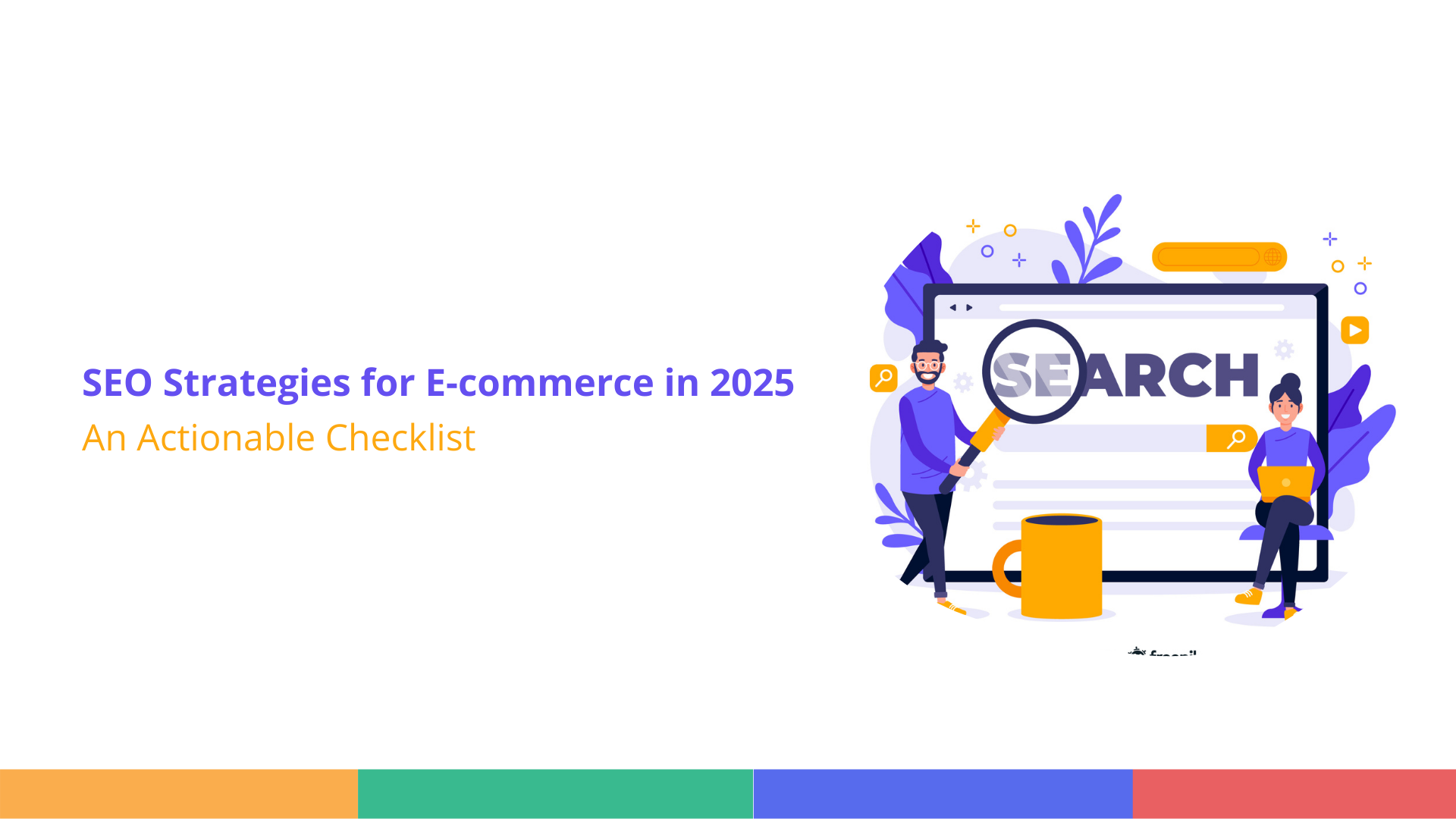As e-commerce continues to evolve in 2025, SEO strategies for e-commerce remain a critical tool for driving organic traffic, enhancing user experience, and increasing conversions. The digital landscape is increasingly competitive, making it vital for small businesses and individual entrepreneurs to implement cutting-edge strategies to stay ahead. This guide outlines actionable SEO strategies tailored to the needs of e-commerce in 2025, with detailed examples and steps for implementation.
1. Understand the Importance of SEO
SEO isn’t just about achieving high search rankings; it’s about attracting relevant traffic and converting visitors into loyal customers. With search engines prioritizing engagement metrics like dwell time and goal completion rates, focusing on user satisfaction and high-quality content is essential.
Example:
An online store selling handmade candles can benefit from optimizing content around user intent, such as “best handmade candles for gifts,” instead of merely targeting generic keywords like “candles.”
Action Steps:
- Track key user engagement metrics like bounce rate and average session duration.
- Prioritize site usability to ensure a seamless browsing and purchasing experience.
Read This Blog Also : How to Start an E-commerce Business: A 2025 Guide
2. Conduct Comprehensive Keyword Research
Keyword research in 2025 requires targeting highly specific long-tail keywords that align with user intent. These keywords often reflect purchase decisions, especially for e-commerce sites.
Example:
A fitness gear store might target long-tail keywords like “durable resistance bands for beginners” or “best yoga mats for outdoor practice.”
Action Steps:
- Use tools like Ahrefs, SEMrush, and Google Keyword Planner to identify keywords with high relevance and search volume.
- Analyze competitor strategies to uncover keyword gaps and opportunities.
- Focus on transactional keywords such as “buy,” “best price,” and “review.”
3. Optimize Product Pages
Product pages are often the first touchpoint for potential customers. Optimizing these pages ensures higher rankings and better conversion rates.
Example:
For a clothing retailer, product descriptions should include material details, sizing guides, and keywords like “comfortable cotton T-shirt for summer.”
Action Steps:
- Craft unique, keyword-rich product descriptions.
- Optimize title tags and meta descriptions with relevant keywords.
- Use structured header tags (H1, H2) to improve readability.
- Incorporate high-quality images with descriptive alt text for accessibility and SEO.
4. Leverage Schema Markup
Schema markup helps search engines better understand your content, enabling rich results like product ratings, prices, and availability to appear in search results.
Action Steps:
- Implement schema for products, reviews, and FAQs.
- Use Google’s Structured Data Markup Helper to simplify the process.
- Test schema using Google’s Rich Results Test tool to ensure proper implementation.
5. Enhance User Experience (UX)
User experience directly impacts both SEO rankings and conversions. Mobile optimization, fast load times, and intuitive navigation are non-negotiable.
Example:
A beauty e-commerce site can enhance UX by offering quick-view options for products and a streamlined checkout process.
Action Steps:
- Optimize for mobile-first indexing with responsive design.
- Reduce load times by compressing images and using CDNs.
- Create a logical site structure with easy navigation to guide users through the purchasing journey.
6. Create High-Quality Content
Content marketing remains a cornerstone of SEO. The focus should be on providing value and addressing customer pain points.
Example:
A pet supply store can create a blog titled “Top 10 Tips for Grooming Your Dog at Home,” including links to grooming products.
Action Steps:
- Publish product guides, tutorials, and customer stories.
- Incorporate visuals like videos and infographics for enhanced engagement.
- Use AI tools like Jasper or Copy.ai to generate content ideas based on trends.
7. Build Quality Backlinks
Backlinks from authoritative sites remain a key ranking factor. The focus should be on acquiring links from high-quality, relevant domains.
Example:
An outdoor gear store can collaborate with travel bloggers for product reviews that link back to their site.
Action Steps:
- Identify guest posting opportunities on reputable blogs.
- Leverage HARO (Help a Reporter Out) to gain mentions in media outlets.
- Create shareable content, such as infographics or industry reports, to attract natural backlinks.
8. Utilize Social Media Effectively
Social media indirectly boosts SEO by driving traffic and increasing brand visibility. Engaging with your audience also builds trust.
Example:
A home décor shop can use Instagram Stories to showcase products while linking to their e-commerce site.
Action Steps:
- Share blog posts, promotions, and product launches on platforms like Instagram, Facebook, and Pinterest.
- Use social media buttons on product pages to encourage sharing.
- Run contests or giveaways to increase engagement and attract followers.
9. Monitor User Engagement Signals
Search engines in 2025 give significant weight to user engagement signals, such as click-through rates and dwell time.
Example:
A book retailer can track engagement on product pages to identify which genres are popular and optimize their inventory accordingly.
Action Steps:
- Use tools like Google Analytics to monitor metrics like bounce rate and average session duration.
- Conduct A/B testing on landing pages to determine which designs perform better.
- Regularly update your content based on user feedback.
10. Embrace AI-Powered Tools
AI is revolutionizing SEO, offering insights into customer behavior and automating repetitive tasks.
Example:
An online electronics store can use AI to personalize recommendations based on browsing history, boosting conversions.
Action Steps:
- Implement AI-driven chatbots for customer support.
- Use AI analytics tools to predict trends and customer preferences.
- Experiment with AI-generated content while ensuring quality and accuracy.
11. Diversify Traffic Sources
Relying solely on organic traffic is risky. Diversifying your strategy ensures stability and resilience.
Example:
A fashion retailer can run Google Ads alongside organic efforts to target seasonal shoppers.
Action Steps:
- Invest in paid campaigns like PPC to complement organic SEO.
- Leverage affiliate marketing to expand reach through partnerships.
- Build email marketing campaigns to re-engage existing customers and drive repeat purchases.
12. Stay Updated with Algorithm Changes
Search engine algorithms are constantly evolving, and staying informed is crucial to maintaining visibility.
Action Steps:
- Follow SEO blogs like Moz and Search Engine Journal for updates.
- Participate in forums and communities to exchange insights.
- Regularly audit your site to ensure compliance with the latest SEO standards.
Conclusion
The SEO landscape in 2025 demands a comprehensive approach that combines technical expertise, creative content, and data-driven strategies. By implementing the steps outlined in this guide, e-commerce businesses can enhance their online presence, attract targeted traffic, and drive sustained growth. Remember, SEO is an ongoing process—commit to continuous learning and adaptation to stay ahead in the competitive world of e-commerce.




